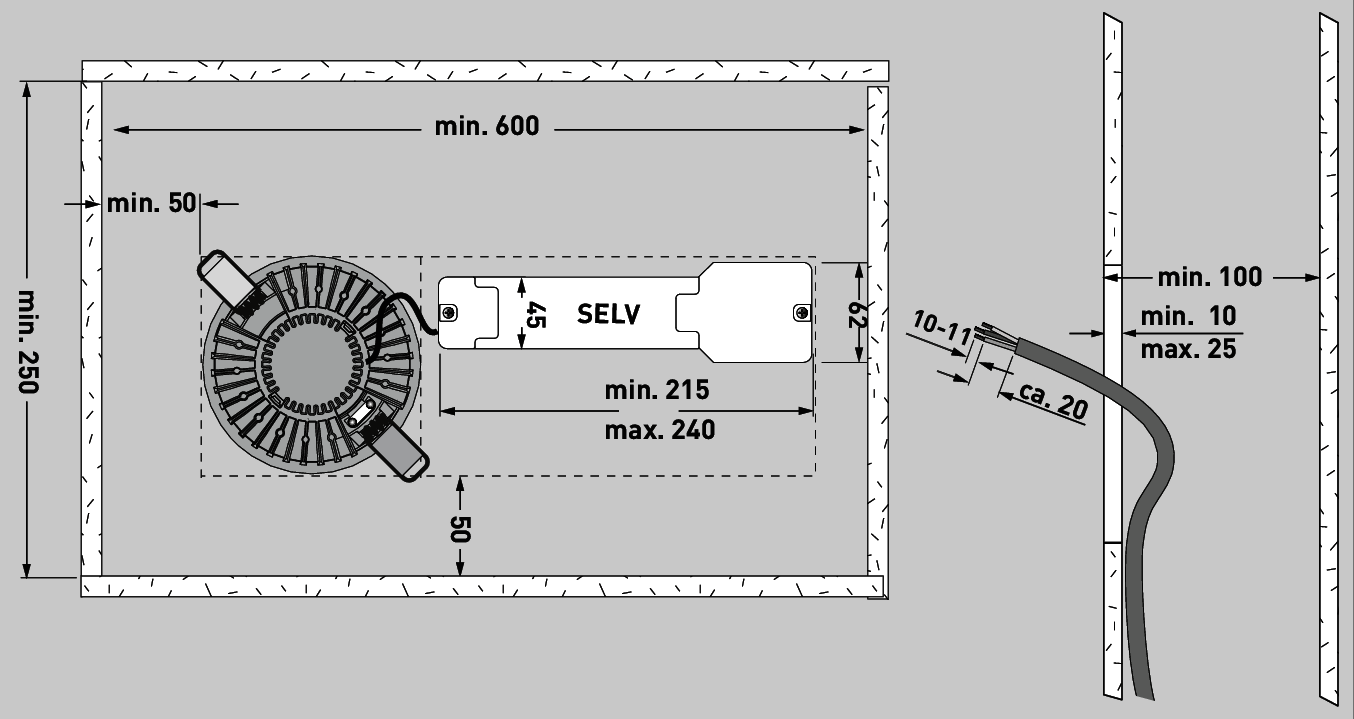During operation, luminaires convert electrical power to light and partially to heat. This heat must be dissipated to facilitate proper luminaire operation. For recessed luminaires in particular it is therefore vital to consider heat dissipation requirements for their application.
Lighting heat
If recessed luminaires are not labelled for any limitations, it can be assumed that when observing the installation instructions, the maximum level of heat they can generate during operation will not affect their operation and will render them generally fit for use. A limiting label1 will be attached, however, to luminaires which are not suitable for recessed installation in ceiling and wall opening if thermal insulation is present which might cover the luminaire. This is not solely a fire safety requirement (see chapter "Fire safety"), it refers mainly to the luminaire's failure-free operation in compliance with technical specifications. Non-compliance leads to heat build-up inside the luminaire and can result in reduced luminous efficacy, accelerated ageing of components and premature failure of the light sources or luminaires.

Figure 3.184: Minimum dimensions for the recessing space of a downlight
Common dry construction materials must be regarded not as insulating materials but as normally heat-conductive for this purpose. Thermal testing of the luminaires in the laboratory is conducted according to EN 60598 using a mounting enclosure with side frames made of 19 mm thick plywood coated black and a 12 mm thick flake board as the holding ceiling plate and the top cover. Luminaires are tested in their operating position as documented in the installation instructions, with consideration to the installation information provided therein.
For recessed luminaires without the aforementioned limiting labelling, testing is conducted with two additional completely closed layers of insulating material at 10 cm thickness and a heat conductivity of 0.04 W/mK.
As the case may be, minimum dimensions for the recessing opening as documented in the installation instructions must be observed. For luminaires with limiting labelling regarding heat insulation as well as those without said labelling1, the surface of the recessing volume is required for heat dissipation. For TRILUX recessed luminaires with typical system ceiling dimensions (e.g. 600 mm x 600 mm, 300 mm x 1200 mm etc.), the ceiling material can rest directly against the luminaire. For downlights and recessed spots, the required geometries are outlined (see figure).
1 The attached symbol  is visible on the outside of the luminaire and can be found in the installation instructions.
is visible on the outside of the luminaire and can be found in the installation instructions.